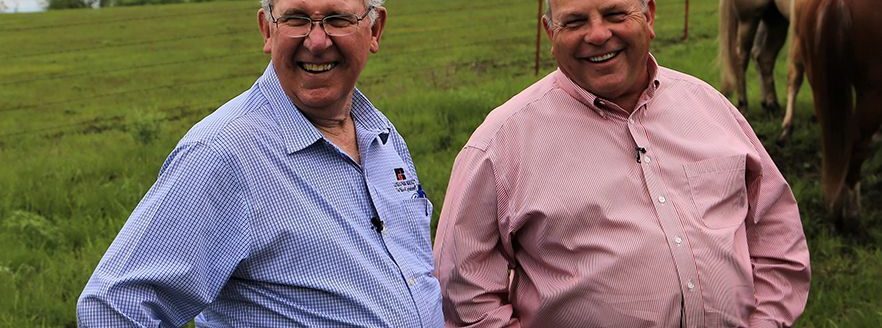Dealing with the disaster that struck the nation’s midsection in March is going to take time.
Damages in Nebraska and Iowa combined are expected to easily exceed $2.5 billion. Each state has successfully made application to President Donald Trump for relief monies to help in the cleanup and recovery process.
Trump approved a disaster declaration for 73 Nebraska counties and 56 Iowa counties. Declarations allow states to seek funds through the Federal Emergency Management Agency. Iowa Gov. Kim Reynolds estimated damage to homes, businesses, agriculture and levees at $1.6 billion, according to the Associated Press.
States including Missouri, Kansas, South Dakota and Minnesota are also facing flood issues. This disaster is a result of the past winter offering much higher than normal precipitation combined with below normal temperatures. A late winter storm also produced a blizzard in Nebraska and added rain throughout the region, aggravating conditions causing levee breaks and at least one major dam to burst.
Nebraska officials are expecting recovery and reconstruction to be a lengthy process for not only farmers and ranchers but also those who use the state’s infrastructure.
During a March 21 conference call with the media, Nebraska Department of Agriculture Director Steve Wellman said the preliminary estimates of the direct damage to crops and livestock producers will be upward of $1 billion—$440 million in crop and $400 million in cattle losses.
The biggest immediate need is hay, Wellman said.
The NDA issued a news release stating producers impacted by the blizzard and flooding who are now in need of hay, feed stuffs, fencing, volunteer help, equipment or other needs should call 1-800-831-0550. They need to share their name, contact information, number of livestock, location (including county), assistance sought and the urgency of the need.
People who want to donate hay, feed stuffs, fencing materials, equipment and other supplies are asked to contact the Nebraska Department of Agriculture at 1-800-831-0550 and be prepared to share your name, contact information, and what you are willing to donate and the amount, along with your location.
Environmental Quality Director Jim Macy said Gov. Pete Ricketts has issued two executive orders to help producers. Those orders temporarily give ranchers a reasonable amount of time to dispose of livestock that died and temporarily suspends requirements for trip and fuel tax permits. On a practical basis that means producers and drivers can receive timely shipments of hay and other supplies and be able to remove debris without being subject to the federal hours of service rules.
The two Nebraska officials also talked about the need for farmers and ranchers to seek counseling as mental health is the most important step in the recovery process.
Farmers do have resources through organizations they belong to, clergy and mental health experts. They also can contact the University of Nebraska-Lincoln Extension Service and helpful information is available at extension.unl.edu.
The U.S. Department of Agriculture has been in regular contact with Nebraska officials and they are aware of the problems facing neighboring states too.
Wellman said it is difficult to project how the disaster might impact grocery shoppers. For meat production, the processors have been affected not only in getting employees to work but also how to get the animals to the plants and the meat distributed. Many of the companies are diversified and have operations in other states and that can help streamline production, he said.
“How it will affect consumers I don’t know,” Wellman said.
Macy said his department is working with the regional office of the Environmental Protection Agency to have kits that can help rural residents to test the quality of their drinking water.
Macy reiterated the need to follow the leadership of local emergency management officials. Wellman offered similar advice by asking producers to work with their local Farm Service Agency officials and to regular check the Nebraska Department of Agriculture website at www.nda.nebraska.gov.
A list of disaster relief resources for Nebraska farmers and ranchers is also available online at http://www.nda.nebraska.gov/resources. This website includes links to USDA’s Farm Service Agency programs including the Livestock Indemnity Program and information from the Nebraska Extension.
U.S. Rep. Roger Marshall, R-KS, a member of the House Agriculture Committee, said the biggest need is getting farmers and ranchers the help they need so they can return to full operation. He believes Congress will take a bipartisan approach to providing disaster aid not only to the midsection but storm victims in the southeast.
Members of the ag committee work on a bipartisan manner and he feels for his friends on the committee that work in the states hit hard by the storms.
Long term, he hopes Congress would take a look at the flood control system. He says the Army Corps of Engineers may have been able to reduce the levels in upstream reservoirs to relieve the pressure downstream, which in turn Marshall believes could have prevented much of the damage.
Marshall said the Corps is reluctant to drop water levels in reservoirs in winter but with record precipitation above the disaster area it made sense to reduce reservoir levels but as part of the hearing process Congress needs to hear the Corps’ perspective.
The flood damage is also expected to hit state budgets.
Rep. Boyd Orr, a Kansas lawmaker from Fowler and a member of the state’s House Ag Committee, said elected leaders and state officials have felt the impact in northeast Kansas, which is dealing with floodwaters where the Missouri River breached the levee system. It will have an impact on the state’s highway and bridge monies and also in many counties. Below normal temperatures and higher than normal snowfall has meant chemical treatments were used to keep the roads driveable and that comes at a cost as it means more maintenance.
Orr said the last comparison for such widespread damages was in 1993 when flooding occurred during the spring and summer.
Dave Bergmeier can be reached at 620-227-1822 or [email protected].



